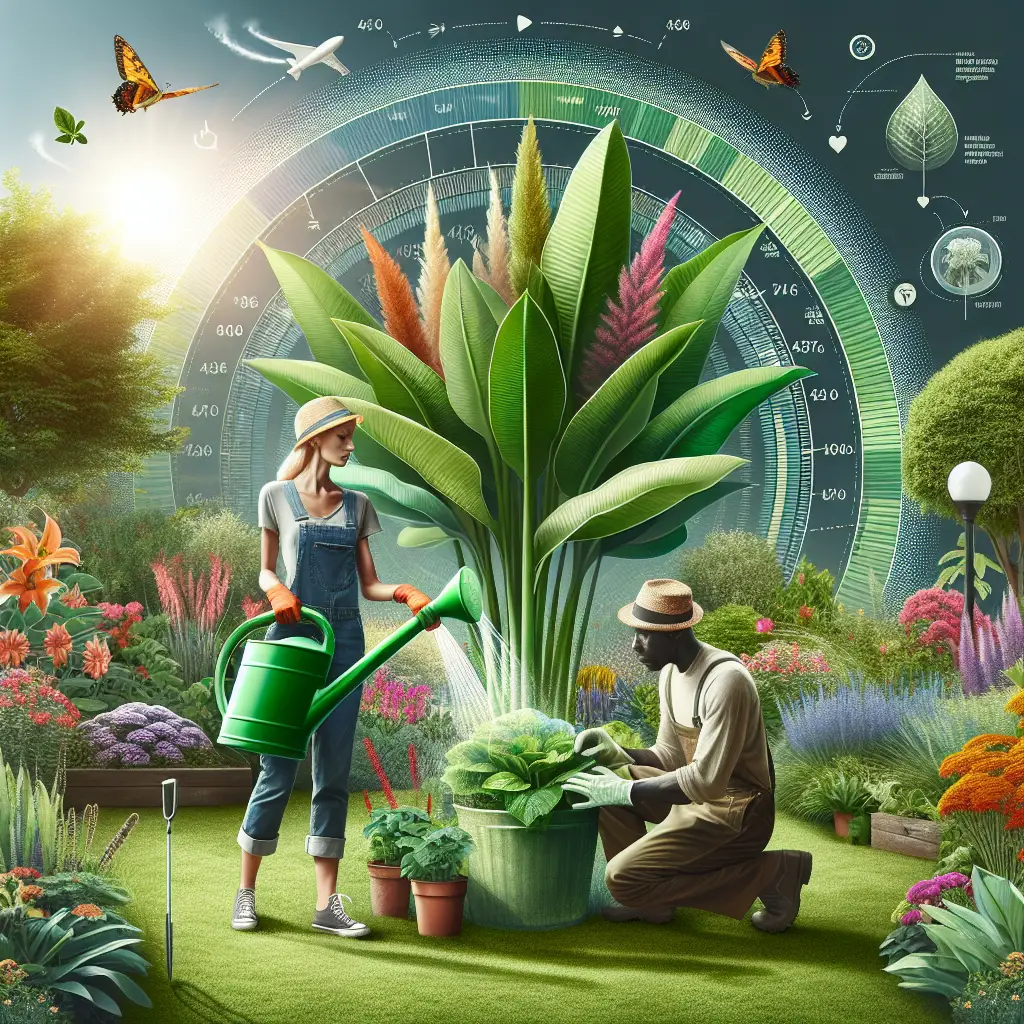Watering Tips for Large Plants in Your Garden
Watering your garden is more of an art than a chore. It’s about understanding the needs of your plants, the soil they’re rooted in, and the climate they are thriving in. Large plants, with their deep roots and towering presence, need special attention to ensure they remain robust and healthy. Here’s the ultimate guidance for keeping your garden giants well-hydrated and flourishing.
Understand Your Plant’s Needs
Each large plant species has unique watering requirements. For instance, a majestic oak tree will have vastly different needs than a tall ornamental grass. Start by researching your plant’s specific needs either through gardening books or credible online resources like the Arbor Day Foundation or local extension offices.
Assess the Soil
Before you water your large plants, check the soil’s moisture level. A simple method is the finger test; stick your finger into the soil about 2 inches deep. If the soil feels dry at that depth, it’s time to water. For a more high-tech approach, consider using a soil moisture meter which provides a precise reading of the moisture content.
Timing Matters
Watering at the right time of day is crucial for the health of large plants. Early morning or late afternoon is optimal as it allows water to seep deeply into the soil and reach the roots without too much evaporation. Also, watering at cooler times reduces the risk of fungal diseases which can be caused by evening watering.
Techniques for Deep Watering
Deep watering encourages roots to grow deep, making plants more drought tolerant. Use a garden hose or a soaker system and let the water trickle slowly at the base of the plant. A good rule of thumb is to provide about an inch of water per week, but this varies by species and climate conditions.
Mulch is Your Ally
Mulch not only helps in suppressing weeds but also maintains soil moisture. Apply a 2-3 inch layer around the base of your plants, being careful not to pile it up against the stems or trunks, which can cause rot. Organic mulch like wood chips or straw decomposes over time, adding nutrients to the soil. For best practices in mulching large plants, check out resources from Cornell University’s Gardening Extension.
The Role of Climate
Large plants have a tough time during droughts or heatwaves. It’s important to water more frequently during these times but beware of overwatering. Excessive moisture can lead to root rot or other diseases. Conversely, in cooler, wet climates, you might need to water your large plants less frequently. Pay attention to rainfall and adjust your watering schedule accordingly.
Signs of Over and Under-Watering
Recognizing the signs of water stress is vital. Under-watered plants will often have drooping leaves and dry, brittle stems. On the flip side, over-watered plants may have yellowing leaves, soft rotting roots, or growth of algae and fungi near the plant base. Observing your plant’s daily conditions can provide cues about their watering needs.
Fertilizing and Watering
Large plants benefit from regular fertilizing, but ensure this is in tandem with proper watering. Fertilizers can cause a buildup of salts in the soil, which can harm plant roots unless they are periodically washed away by deep watering. A well-balanced slow-release fertilizer can provide a consistent nutrient supply without the need for frequent applications.
Don’t Forget to Automate
If you’re a busy gardener or often away from home, consider investing in an irrigation system with a timer. This can help ensure your large plants receive consistent moisture without over-relying on your availability.
The Takeaway
Watering large plants in the garden is a balancing act but can be mastered with a little knowledge and observation. Incorporating these tips into your gardening routine will help promote the health and vitality of your garden’s largest residents.
- Get to know your plant’s needs – they’re all unique.
- Check the soil regularly, and consider investing in tools like a moisture meter for accuracy.
- Water during cooler times of the day.
- Employ deep watering techniques to encourage strong root systems.
- Use mulch to conserve moisture and enrich soil.
- Adjust watering habits according to the climate.
- Be mindful of the signs of over and under-watering.
- Couple watering with appropriate fertilization schedules and products.
- Consider automating your watering system for consistency.
By nurturing your large garden plants with attention to their watering needs, you’re setting the stage for a vibrant and sustainable garden ecosystem. Happy gardening!


